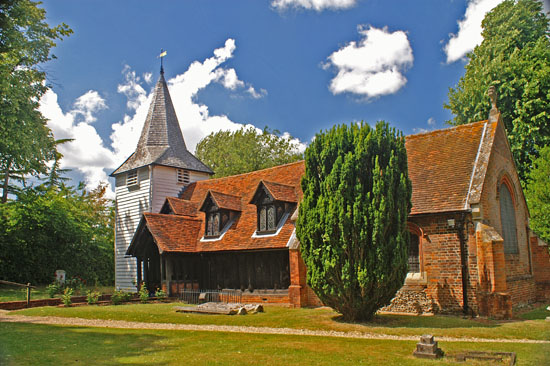|
|
||||||||||||||||||||||||||||||||||||||||||||||||||||||||||
|
Please sign my Guestbook and leave feedback |
||||||||||||||||||||||||||||||||||||||||||||||||||||||||||
|
Recent Additions |
||||||||||||||||||||||||||||||||||||||||||||||||||||||||||
|
|
||||||||||||||||||||||
|
We know that the Normans made changes here but a pillar piscina is the onlyevidence. Greensted is believed to be on one of the shrines at which the martyred body of St Edmund was rested on its way to its final interment at Bury (St Edmunds) in 1013. Edmund, King of East Anglia, was killed by the Danes in 869 or 870. Whether he simply died in battle or, as the Church prefers to believe, he was martyred in the aftermath after refusing to renounce his faith we will never know. Strangely, however, the church is dedicated to St Andrew rather to St Edmund. The Tudor period, however, gave us most of the church that we see today. The chancel was rebuilt in brick and thatch. Dormer windows were placed both sides of the nave roof. How different this is from the clerestory that enhances the light of most of our churches, and how utterly charming! The porch was added at this time. There is debate about the age of the tower. One of the bells is inscribed with the date 1618 but there are claims that it is older. Our friends the Victorians left their mark, of course. By the time of its restoration in 1837, however, Greensted was in a state of neglect. The most obvious change was the replacement of the Tudor dormer windows. The roof trusses were made more elaborate. It would be easy to criticise the restoration, but the timber nave walls were spared apart from when repairs were needed and we are left with a church of great beauty. |
 |
|||
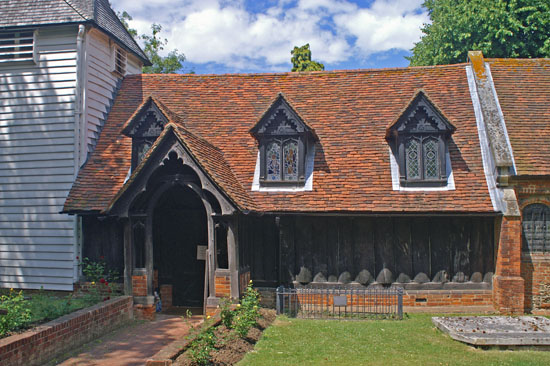 |
|||
|
Left: The nave timbers can be more clearly seen in this photograph. The dormer windows are unusual and perhaps a little bizarre on a church, but the effect is undeniably visually pleasing. A more conventional solution to the lack of light might have involved loss of the nave walls! Right: There is a harmonious mixture of wood and white plasterwork that produces a pleasant interior. |
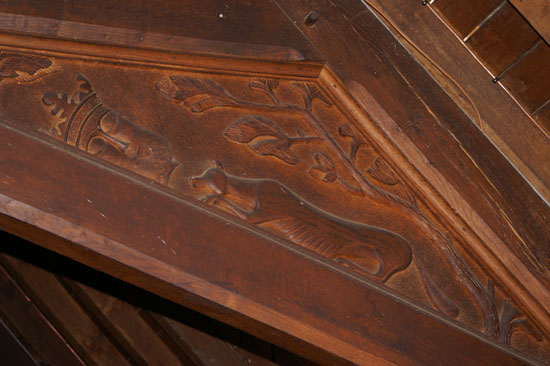 |
 |
|||||||||||||||||||||||||||||
|
Left:These are Victorian carvings. The severed head is of St Edmund whose corpse is guarded by a dog. Right: More royal motifs from the Victorian era. |
||||||||||||||||||||||||||||||
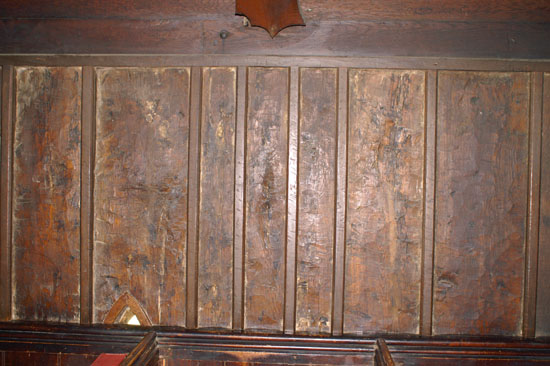 |
||||||||||||||||||||||||||||||
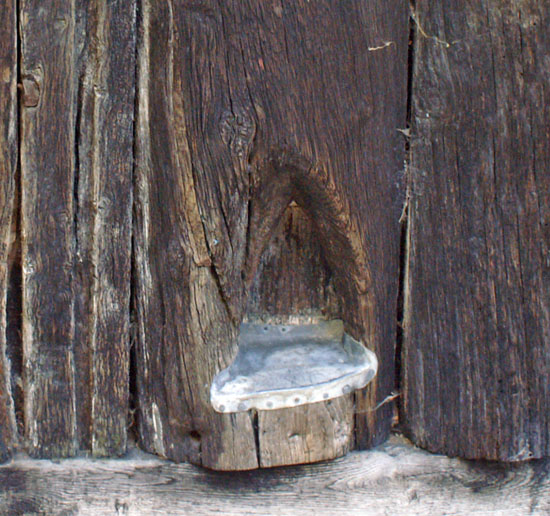 |
||||||||||||||||||||||||||||||
|
Left: On the north side of the church, is the top of what was widely believed to be a leper’s squint, but which is much more likely to have been a holy water stoup, standing as it does adjacent to where a now-disappeared door was known to be. You can just see it on the left hand side of this picture on the line of the pews. Right: The stoup from the outside. |
||||||||||||||||||||||||||||||
 |
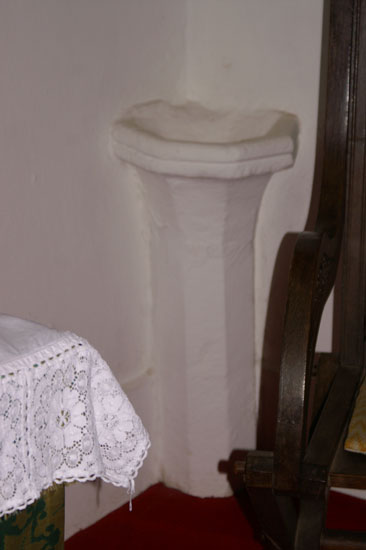 |
|||||||||||||||||||||||||||||
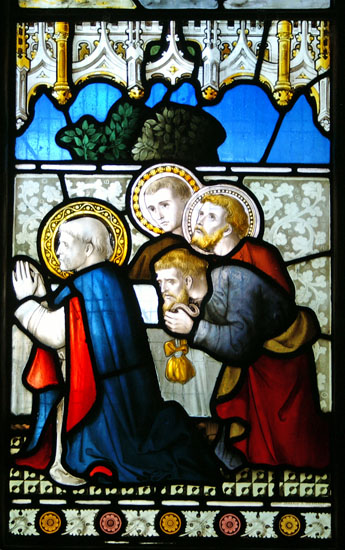 |
||||||||||||||||||||||||||||||
|
Left: The corner post (centre) at the north west of the nave is the only one that survives. It is a quarter- rather than half-section. Centre: The Norman (and very plain) pillar piscina. Right: Spot the Judas...! Simon Jenkins describes the chancel’s stained glass as “dreadful”. What constitutes “good” and “bad” stained glass is a mystery to me, but I am sure Mr Jenkins is right. To be honest, most Victorian glass looks pretty awful to me. |
||||||||||||||||||||||||||||||
 |
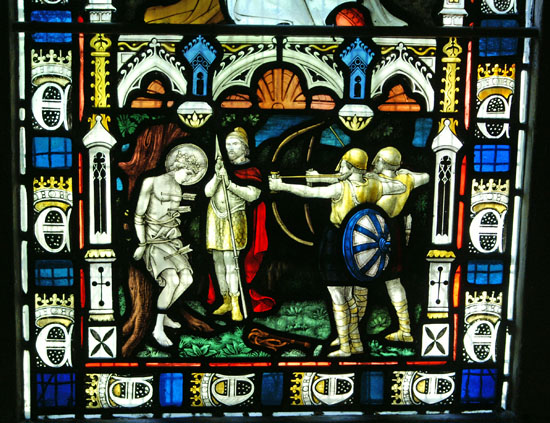 |
|||||||||||||||||||||||||||||
|
Left: The northern nave wall, with adze marks very obvious. Right: The martyrdom of St Edmund as shown in the “dreadful” Victorian glass! Actually, I don’t think this one is too bad. |
||||||||||||||||||||||||||||||
 |
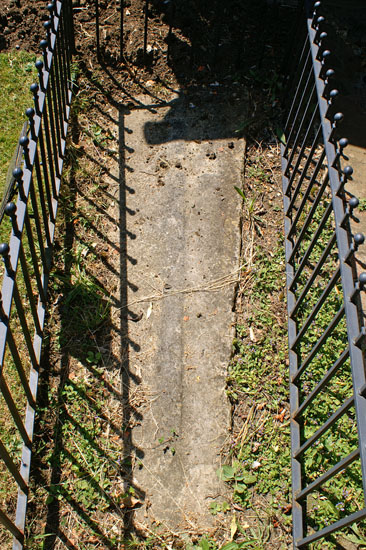 |
|||||||||||||||||||||||||||||
|
Left: An unusual surviving wooden grave memorial. Poor Edward Edwards whose grave this is died in 1842 from an accident with a scythe when trying to win a drunken bet. Right: This gravestone is believed to be off a bowman who had been on a c12 crusade. It is easy to forget that amongst all the Templars, Hospitallers and other chivalrous figures woiuld have been many more poor forgotten footsloggers such as this one. |
||||||||||||||||||||||||||||||
|
Footnote |
||||||||||||||||||||||||||||||
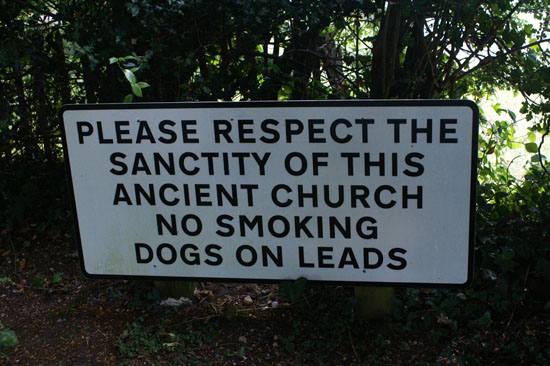 |
||||||||||||||||||||||||||||||
|
Diana and I love notices: they are so frequently full of bizarre spellings and egregious punctuation errors. So we really loved this one. We are not sure whether it is smouldering dogs that this applies to, or to ones with a bad nicotine habit, but in any event they’d better not be seen on leads....or else! |
||||||||||||||||||||||||||||||
